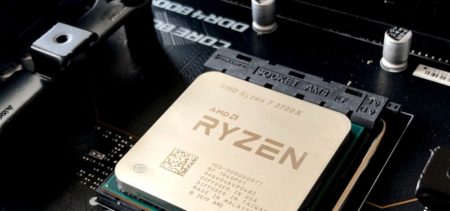Introduction and design
If you’re looking to purchase a powerful, portable and attractive laptop, the Dell XPS 13 (starting at $799, £520, AU$980) has to be one of the top contenders. It features a sleek design, a lightweight chassis and a revolutionary display that will force manufacturers to rethink how they build laptops.
Although the XPS 13 warrants mention in the best Ultrabook conversation, Dell’s new model has several worthy competitors.
We recently awarded the new Asus Zenbook UX305 ($699, £649, AU$902) the elusive five-star TechRadar rating for its superb performance and build. You’re probably already familiar with the industry standard Lenovo Yoga 3 Pro (starting at $1,099, £1,099, AUS$1,254). And no Ultrabook conversation is complete without mentioning the 13-inch MacBook Air (starting at $999, £949, AU$1,249).
Any of these laptops would make for an excellent buy. However, the XPS’s innovative display differentiates it from what is an already-exceptional Ultrabook market.
Design
The XPS 13 is built with a silver-colored, machined aluminum exterior that is similar to the MacBook Air in sheen and durability. This is an excellent material that, after a week of testing, showed no fingerprints, smudges or scratches.

Dell built the palmrest and backlit chiclet keyboard’s casing in an exquisite carbon fiber composite that is delightful to touch. Unlike some laptops, whose palmrest is built with the same material as the device’s plastic or aluminum exterior, the XPS’s palmrest doesn’t get overheated or sweaty. During all my work and play, I experienced no discomfort after up to seven hours of use.
To ‘Infinity’ and beyond
The real marvel of the XPS 13 is its screen-to-panel ratio. Both the quad HD+ touchscreen model ($1,299, £852, AU$1,605), which I used for my testing, and the lower-end full HD model feature edge-to-edge displays. If you purchase this laptop, you’re getting the screen real estate of a 13.3-inch (338mm) laptop on an 11.9-inch (304mm) device.
Dell was able to deliver a screen that covers 80% of the panel (11% more screen real estate than the 13-inch MacBook Air). Like the MacBook, most other laptops are built with about an inch of border surrounding the monitor.

Dell was able to stretch the screen to within a few centimeters of the upper corners and to within an inch of the front panel’s bottom edge. This feature provides you with a cinematic viewing experience, and it makes touchscreen usage (available only on the quad HD model) much more accommodating.
The quad HD+ version of the XPS 13 packs a 3,200 x 1,800 resolution display into a small laptop. Most of the 13-inch laptops in the Ultrabook category don’t go beyond full HD resolution (1,920 x 1,080), so the added pixels puts the XPS 13 on par with the reigning 13-inch Ultrabook resolution champs: the Lenovo Yoga 3 Pro and the Samsung Ativ Book 9.
What you’ll see
In addition to the boosted pixel performance, the XPS 13 doesn’t give off a ton of glare. I saw a few flickers of light bouncing around along the lower edge of the screen, but unless strong light was emanating from directly behind me, I was able to see the 400-nit screen perfectly, especially when the device was plugged in.
The same goes for viewing angles. You could seat four people side-by-side-by-side-by-side from about three feet away from the XPS 13 without losing any imagery along the screen’s corners.

There are only two downsides to the XPS 13’s marvelous screen and Infinity design.
Firstly, to clear out space along the upper edge of the front panel, Dell had to situate the webcam on the lower left-hand side of the bezel (as opposed to the center of the upper edge of the panel). This isn’t a huge issue, unless you’re like me and prefer to be seen at a downward angle when on video calls.
Secondly, for anyone who has young children, or for anyone who manhandles their devices, the XPS 13 isn’t meant to be grabbed from the upper corners of the panel. Given that the Infinity design stretches the screen to all corners of the bezel, there just isn’t any room for your fingers to grab the top panel without pressing directly on the screen.
Some new, education-focused laptops have made the upper corners of the front panel sturdier, so that you can grab and go in whatever manner you please. The Dell XPS 13 isn’t one of these devices. You’ll want to grab it beneath the base with your palm or along the palm rest with your fingers.
Take this device everywhere
The XPS 13 doesn’t only offer less space along its borders – it’s less spacious in general. It’s only 0.6 inches (15mm) tall, 11.98 inches wide, and 7.88 (200mm) long. If you compare it to some of the slimmer and smaller models currently available, it is one inch shallower and 0.17 inches shorter than the Yoga 3 Pro. The laptop is just less than one inch slimmer and one inch shallower than the Asus Zenbook.
Compared to the MacBook Air, Dell’s model is 0.8 inches shorter, one inch slimmer and 1.1 inches shallower.

The XPS 13 is also one of the lightest devices on the market. The standard, full HD model weighs only 2.6 pounds (1.17kg), while the quad HD model weighs slightly more at 2.8 pounds (1.27). To give some perspective, the Lenovo Yoga 3 Pro weighs 2.62 pounds, the 13-inch Asus Zenbook weighs 2.65 pounds and the 13-inch MacBook Air weighs 2.69 pounds.
Of course, it’s no competition for the soon-to-be champion, the Lenovo La Vie Z (starting at $1,299, £852, AU$1,605), which will weigh only 1.72 pounds (0.78kg) when it is released this May.
Specs and performance
As you’ll soon see, this year’s XPS 13 is fitted to the gills with the latest high-end laptop components. From the newest Intel Core i5 chip to gobs of RAM and storage, the setup with which I wrote this review should see you through well into 2017 and possibly beyond.
Spec sheet
- CPU: 2.2GHz Intel Core i5-5200 (dual-core, 3MB cache, up to 2.7GHz with Turbo Boost)
- Graphics: Intel HD Graphics 5500
- RAM: 8GB DDR3 (1,600Mhz)
- Screen: 3,200 x 1,800 UltraSharp QHD+ touch display
- Storage: 230GB SSD
- Ports: USB 3.0 (2), mini DisplayPort (1), 3-in-1 (SD, SDHC, SDXC) reader (1)
- Connectivity: 802.11 AC and Bluetooth 4.0
- Camera: Widescreen HD (720p)
- Weight: 2.8 pounds (1.27kg)
- Size: 11.98 (304mm) x 7.88 (200mm) x 0.6 (15mm) inches (W x D x H)
Performance
Here’s how the Dell XPS 13 (2015) performed in our suite of benchmark tests:
- 3DMark: Cloud Gate: 4935; Sky Diver: 2745; Fire Strike: 739
- Cinebench CPU: 258 points; Graphics: 28.76 fps,
- PCMark 8 (Home Test): 2,104 points
- PCMark 8 Battery Life: 4 hours and 21 minutes
The Dell XPS 13 performed admirably in its benchmark tests. It ran slightly slower than the Asus Zenbook UX305, scoring a 2,104 on the PCMark 8 Home test, compared with the Zenbook’s 2,107. However, the Dell was vastly superior to the Yoga 3 Pro, which only scored 1,147 points. Although we weren’t able to perform a direct side-by-side comparison to the XPS 13, the most recent version of the 13-inch MacBook Air has produced industry-wide scores in the 2,400-2,500 range.
Both the UX305 and Yoga 3 Pro feature an Intel HD 5300 Graphics chip. The XPS 13 features a newer, more powerful Intel HD 5500 GPU, which was released in early 2015. As a result, the XPS 13 is your best bet among its direct competition for design and gameplay. The XPS 13 scored a 739 on 3DMark’s Fire Strike test, which measures graphics rendering. The ZenBook scored 594 points, and the Lenovo only scored 329 points.

It also outperformed the competition during 3DMark’s Cloud Gate test, which analyzes a computer’s ability to process graphics and manage gameplay physics. The XPS 13 scored 4,935 points compared to the Zenbook’s 4,210-point performance, and it demolished the Yoga 3 Pro, which scored only 2,738 points.
None of these laptops is going to satisfy hardcore gamers; however, the XPS 13 is the best of the bunch. The XPS 13 scored 2,745 points on 3DMark’s Sky Diver test – outscoring the Asus by 500 points, and the Lenovo by 1,300 points.
During Cinebench’s frame rate test, the XPS 13 managed 28.76 frames per second (fps), a little more than 7 fps than the Asus, and more than double the frame rate of the Lenovo. The XPS scored 258 points during Cinebench’s CPU test, which measures a CPU’s multi-core and hyper threading performance . The Asus only scored 202 points.
Battery life
The XPS 13’s battery lasted 4 hours and 21 minutes during the PCMark 8 Battery Life test, which performs a wide range of tasks simultaneously, including video editing, web browsing and gaming. I was able to crank out 7 hours and 40 minutes of video playback by lowering the screen brightness and audio volume to 50%.
Compared to the Asus Zenbook and the MacBook Air, however, the XPS 13 underperforms. The Zenbook’s battery lasted for 5 hours and 21 minutes during the PCMark test, and the most recent MacBook Air played looped video for more than nine hours on several third-party tests.

However, it’s important to note that the ZenBook only features a full HD screen, and the MacBook Air only features a 1,440 x 900 HD resolution. On the other hand, the XPS 13 performed in-line with the Lenovo Yoga 3 Pro’s battery life, which lasted 4 hours and 30 minutes with a similar 3,200 x 1,800 resolution display.
If you’re a fan of the XPS 13’s design, but you require a longer-lasting battery, you may want to consider the full HD version rather than the quad HD+ version. The quad HD+ version’s additional pixels and touchscreen functionality exhaust the battery three hours quicker than the standard model, according to Dell’s estimates.
Minor flaws
The XPS 13 comes with a cool-in-theory battery gauge button, which sits on the left side of the base. When you press the button, you’ll see 0-5 lights, which indicate how much battery life is left (five being fully charged). The problem with this feature is that it takes so much effort to find the tiny button, and then to twist the laptop or crane your neck, that you might be better off opening the device and checking battery-life on the screen.
Another design flaw I would like to see remedied next year is the XPS’s power button location. Right now, it is dangerously close to the delete button. I suffered through a few accidental presses that interrupted my work.
I’m also not a huge fan of Dell’s Precision TouchPad. I realize this is a personal preference, but I find this Touchpad to be a bit, well, precise. Lifting and lowering my finger even a smidge casts the cursor off to parts unknown, or worse, it opened and closed browser windows with which I had no intention of tampering. Again, this is easily remedied by adjusting your TouchPad’s sensitivity in the settings menu, but in general I prefer a more more standout, less sensitive pad (perhaps something between the XPS 13’s and the clunk-master that you’ll find on the Lenovo ThinkPad X1 Carbon).
The absence of an Ethernet port will make this a difficult sell for enterprise fleet adoption. However, Dell does sell a lightweight USB 3.0 and Ethernet port adapter that should satisfy the needs of consumers.
Although the Waves MaxxAudio Pro speakers that sit along the sides of the bottom panel won’t produce bass-bumping audio, the sound quality is natural and fluid. The sound, although low-volume, isn’t as tinny and screechy on full-blast as other units we’ve tested (namely the Asus Zenbook), but this is by no means a device made for musicians looking to fine-tune their tracks. Audio will come out flat, without any enhanced bass or depth, but your tunes won’t be downgraded by defective noises or pitches.
Verdict
The new XPS 13 enters a competitive marketplace. Can its revolutionary Infinity display, lightweight design and fully-loaded component set propel it to the top of the Ultrabook category?
We liked
The XPS’s edge-to-edge display differentiates it from all other Ultrabooks. It’s hard to imagine a small form-factor laptop delivering captivating visuals, but that’s exactly what the XPS 13 does. By trimming the border surrounding the laptop’s display, Dell was able to provide a cinematic viewing experience. Even if you choose to go with the full HD version, rather than the quad HD+ touchscreen upgrade, the edge-to-edge panel will impress you.
Fortunately, Dell’s XPS 13 upgrades include under-the-hood improvements as well as cosmetic ones. This laptop outperformed comparable Ultrabooks in almost all benchmarking tests. Although it does run a bit slower, your graphics processing and frame refresh rates will be better than the best Ultrabooks available.
We disliked
Almost all of the XPS 13’s flaws are superficial. The power button’s placement is problematic and may cause accidental misclicks. The new battery life gauge is also poorly placed and is more difficult to use than simply checking your desktop. You won’t love the speakers, but they won’t detract from your listening experience.
Perhaps the biggest drawback is the XPS 13’s lack of an ethernet port. However, Ultrabooks and ethernet ports are becoming a rarer and rarer combination these days, as more laptop buyers experiment with 2-in-1 laptop/tablet hybrids. I suggest purchasing the USB/ethernet adapter.
Verdict
The Dell XPS 13 is a brilliantly-designed laptop that outperforms its competition under the hood. The Infinity Display will cause a ripple effect in laptop design that will dramatically improve how users experience their devices.
Fortunately for us, the XPS 13 isn’t all beauty and no brains. This laptop features the horsepower to make work and play enjoyable, and it has just enough battery life to never leave you in a lurch. Regardless of whether you choose to upgrade to the touchscreen quad HD+ version, or if you stand pat with the full HD model, the Dell XPS 13 will provide you with a delightful experience for years to come.































